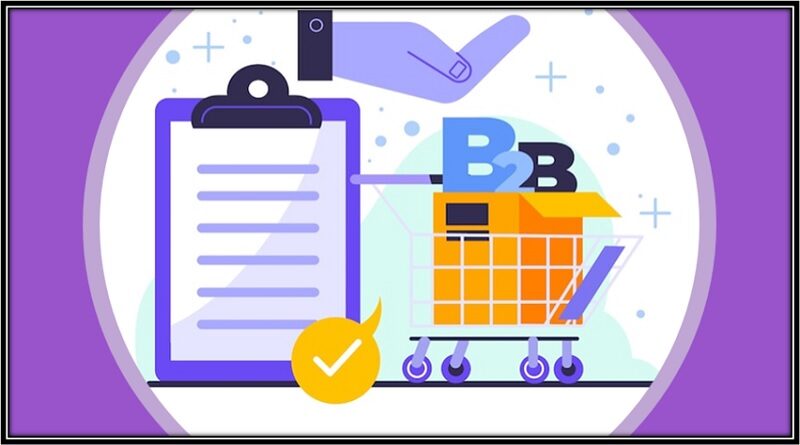How to Get B2B Leads for Your Online Business
Backroom deals and formal meals with a white tablecloth are no longer used to generate leads for business-to-business sales. Although the human connection remains the cornerstone of B2B sales, it is no longer as obvious as it once was. But you’re here for that reason. You’ve come to the perfect place if you’re a B2B sales executive or manage an agency and want to alter how you generate leads. You will learn the fundamentals of effective sales strategies for a contemporary B2B company in this article. 8 B2B Sales Strategies for Quality Lead Generation Review these strategies to create a foundation for your business that will enable you to scale and obtain leads that convert to customers before you start sending direct messages to contacts on LinkedIn.
#1 Change Your Mindset
You can feel queasy or terrified when you hear the word “sales.” We comprehend. You established a company to have an impact rather than increase sales. The harsh reality is that in order for your business purpose to succeed, you must identify customers. You will eventually need to sell your business, even if you launch it with a long waiting list or a client on retainer. If not, your company will collapse. It’s time to alter your perspective on the purpose of selling. We’re going to use the famous quote from Gordon Gekko from the 1987 blockbuster Wall Street, “Greed is good,” even though it seems cliché and theatrical.
“Sales are good.”
B2B sales are meant to assist other businesses, and by businesses we mean people. You are in business for the same reason, which is to use a product or service to address a problem. The method for someone to travel from point A to point B is your sales offer. Avoid thinking of oneself as a product pusher when contacting a potential B2B lead and instead picture yourself as a problem-solver. It’s more about the individual you’re speaking to and less about you or your company. Act with empathy and with the prospective customer’s best interests in mind. You will engage in problem-solving discussions rather than sales sessions if you adopt this approach.
Here are mantras to remind yourself and your team to keep your mindset focused on the person, NOT the sale.
B2B Sales Mindset Mantras
- Selling is helping.
- Sell the next step. Sale is a process.
- Consistency is the name of the game.
- Know your numbers and your lead’s numbers.
- You’re running a series of experiments. Learn from them.
- Be prepared for the noes.
- Every “no” leads to the next “yes.”
- Get the right message to the right person.
- Don’t take it personally.
#2 Set Realistic Goals
Goal-setting is a fundamental aspect of business because it affects all area of your firm, especially in the B2B market. Despite their seeming simplicity, goals require a careful balance. If you have unattainable ambitions, you will always fall short. If your goals are low-bar, you’ll never advance. The greatest strategy for B2B sales is gradual and steady, as opposed to spamming your email list like you’re selling prepaid phone cards (look it up, kids). Because they involve contracts, higher price points, and greater customer investment, B2B sales by their very nature have longer cycle times. You must therefore be deliberate in every communication you send since it all adds up, whether it’s a LinkedIn message or a 30-minute discovery Zoom conversation.
Here are standard goals to set for B2B sales leads:
- 1-10% conversion rate AKA booking a call (1-3% = Good. 3-5% = Very good, 5-10% = Excellent).
- 2-5 booked calls per week = Excellent. 5-10 is also possible, but that will only happen with more labor and leveraging automation.
- 2-5 booked calls a week would lead to 1-3 new clients a month (assuming a 20% closing rate).
This means…
On average, it takes 5 meetings to get 1 client.
#3 Land Meetings
meeting after meeting after meeting. They are crucial to B2B sales. After 30 minutes of a B2B lead’s complete attention, you’ll be able to tell whether or not you can meet their needs. It might still be difficult to get on someone’s calendar even with the proliferation of virtual meetings. Even with good communication and the use of scheduling tools, you could still get last-minute cancellations or, even worse, folks who ghost you. Observe first point. Your frame of mind will drive you to be persistent and consistent in setting up meetings. A strategy is therefore essential for contacting B2B leads. You won’t feel like you’re beginning over each time you contact a new prospect if you stick to a method.
Here’s our 3-step process for landing meetings.
- Identify: Target and build a list of leads.
- Message: Write your messaging sequence and contact your list of prospects.
- Convert: Following up with all responses/leads. Turn existing conversations into booked calls.
#4 Dial in Your Niche and Avatar
As we said, mass sends don’t work with B2B sales. Instead, you need to identify your niche customers and speak to their needs. Ideally, you have a general understanding of your niche as a business (SEO for dentists, SaaS for NFT artists), which will naturally guide you to the type of customers you want. But if you don’t have previous customer data to pull from, the best way to understand your niche customer is to create an avatar. Customer avatars are representations of your ideal B2B leads. Essentially, you can pretend what your lead looks like (demographics, business size, region, industry) and plan a strategy to find them IRL. Having multiple avatars is okay, but remember to create B2B sales messages for each one. Again, blanket approaches don’t work for B2B sales.
Here’s an avatar and messaging example for a made-up consulting agency called Engrained SEO:
Mike’s Microbrewery Customer Avatar
- Privately owned
- $2M in sales annually
- Expanding canning distribution
- Need to reach new markets in surrounding cities
- 30 employees
- Has one full-time marketing manager and 2 interns
- The founder is the final decision, maker
Engrained SEO B2B Sales Messaging
- We’ve helped food and beverage companies scale their organic audience by 20%
- We have a case study from another microbrewery customer
- We offer add-on marketing services for small teams
- We know the owner’s brother
- We’re a certified Google Ads partner
- We sponsored their Oktoberfest event last year
Don’t forget to always refer to the goals that you set. They will help you define your niche and target your customer base.
#5 Make Your Messages Matter
According to a report from Gartner, B2B customers only spend 17% of their purchase journey with sales reps. That means the time you have with B2B leads is short. So make sure you land your messaging.
Like the avatar example above, the messages you share with B2B leads matter because they:
- Show that you’re listening.
- Confirm that you can get results.
This is a simple example of how messaging converts B2B leads into loyal customers. It can also provide insight into the gaps you have as a business or if a lead might not be the right fit for what you provide. Here’s a list of messages that you should have ready to go before any B2B sales meeting or campaign:
- General Business Proposition: What makes you stand out as a business?
- Short Elevator Pitches: What’s a 30-second story that shows how you can help a B2B lead?
- Problem Statement: If you’re in a meeting with a lead, what problems do you expect them to have, and how can you solve them?
Understanding your lead’s “flavors of pain” will help you create and refine messages that make a difference. How do you understand these flavors? Ask questions and listen. Only then will you know which message to pull from your toolbag.
#6 Optimize Your Digital Presence
Modern B2B sales are made primarily through LinkedIn. It’s a powerful tool to research leads, connect with them, and set up meetings. 63M decision-makers are active on LinkedIn, and 80% of B2B social media leads happen on LinkedIn. You have to approach LinkedIn as the digital version of yourself at a networking event. You wouldn’t show up to lunch with a lead with a black eye and bad breath? So don’t have a sloppy LinkedIn profile.
Here are 8 key areas to optimize your LinkedIn (at minimum) before you start reaching out to B2B leads.
- Headline
- Cover photo
- Headshot
- About me
- Work History
- Recommendations
- Featured content
- Awards and certifications
Don’t forget other social media platforms like Instagram and Facebook. Just because you don’t do business on those platforms doesn’t mean a lead won’t check your profile. Ensure your profiles are private if you don’t want a prospect to know how you spend your weekends.
#7 Refine Your Rituals
What’s your daily routine for outreach? When are you setting aside time in your busy schedule to follow up with a lead? As a founder or leader of a startup B2B business, time is scarce. That’s why you need to set standards from the beginning if you have any chance of getting leads for the next week, month, quarter, or year. The quality of B2B leads you to get reflects the quality of your sales rituals and processes. It takes discipline and organization to ensure you build a strong portfolio of leads and nurture them into customers. A long sales cycle means you need to stay organized over time. Sloppy sales processes will only get you so far.
Here are some tips to refine your rituals for B2B sales:
- Schedule time on your calendar. Block off each day for outreach.
- Set aside 90 minutes daily to start at a minimum (more is always better).
- Track your progress as you go and build good habits from the beginning.
As you grow, share these disciplines with your sales team and customize them for your brand and business.
#8 Build a Real-Time Database
Talk to any marketing manager at a Fortune 500 company, and they’ll eventually bring up challenges with customer data. Even with the advancement in automation technology, sales data still is a pain to keep clean and up-to-date. The good news is that if you’re a startup or young B2B business, then you have the opportunity to create a robust and actionable sales database without hangover data from decades of paper trails and outdated systems. Start small (seeing a theme here?), and don’t try to do everything all at once. Keep track of leads ONLY after they’ve replied or shown some interest–otherwise, the data entry becomes too time-consuming (remember, meetings, meetings, meetings). You don’t need an expensive CRM tool to get the job done. Trello, Pipedrive, or a well-organized spreadsheet will do. The most important thing is to be consistent and thorough with your data entries. For example, the 1-2 minutes it takes to update a decision maker’s phone number after a meeting will save you time and energy in the future. There’s nothing more embarrassing than walking into a meeting with outdated info about the person trying to sell to.
Here are some standard fields to include in your B2B sales data:
- Hot Lead (~1 week)
- Old Lead
- Call Offered
- Call Booked
- Needs to Reschedule
- 2nd Call booked
- Call Completed (needs follow-up)
- Long Term Nurture (calls)
- Long Term Nurture (leads)
Go Deeper on B2B Sales
B2B leads won’t walk in the door unless you do the work. These strategies will get you started for a successful B2B sales structure, but don’t stop here.




